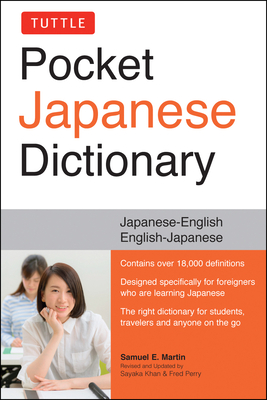
Tuttle Pocket Japanese Dictionary: Japanese-English English-Japanese Completely Revised and Updated Second Edition
Description
This handy Japanese dictionary allows you to look up words quickly and easily--and be understood while speaking.
Intended for use by tourists, students, and business people traveling to Japan, the Pocket Japanese Dictionary is an essential tool for communicating in Japanese. It features all the essential Japanese vocabulary appropriate for beginning to intermediate speakers. Its handy pocket format and user-friendly, two-color layout will make any future language class or trip to Japan much easier. All entries are in Romanized form as well as Japanese script (Kanji and Kana) so that, in case of difficulties, the book can simply be shown to the person the user is trying to communicate with.
This dictionary includes the following key features:
- Over 18,000 words and expressions in the Japanese language.
- Japanese--English and English--Japanese sections.
- Fully updated with recent vocabulary and commonly used Japanese slang.
- Clear, user-friendly layout with headwords in blue.
- Romanized script and Japanese script (hiragana and katakana) and characters (kanji) for every entry.
Other books from this best-selling series you might enjoy include: Pocket Korean Dictionary, Pocket Vietnamese Dictionary, Pocket Mandarin Chinese Dictionary, and Pocket Cantonese Dictionary.

